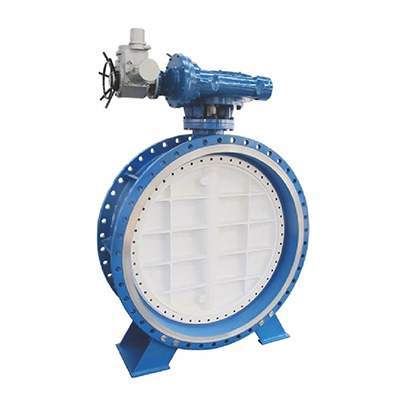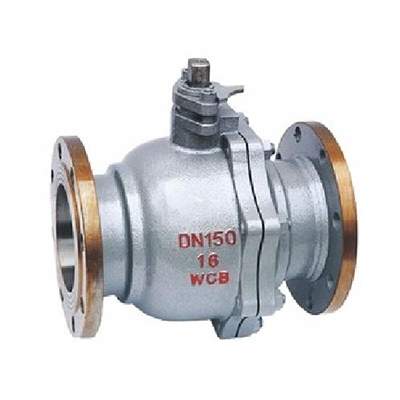Welcome to My Blog!
Before we dive into the content, if you’re interested in our products or have any questions, please feel free to visit our Contact Us page on the website. Our team is ready to assist you with inquiries, orders, or any support you may need.
Now, let’s get started on our journey together. I hope you find the content here insightful, engaging, and valuable.
Introduction

Valves are essential components in fluid control systems, playing a critical role in regulating flow, pressure, and direction. Among the most commonly used valves in industrial and commercial applications are butterfly valves and ball valves. Understanding their differences, advantages, and ideal applications is key for engineers, operators, and maintenance teams.
A butterfly valve consists of a circular disc mounted on a rotating shaft. When the valve is closed, the disc blocks the flow; when opened, it rotates to allow fluid to pass. Butterfly valves are known for their lightweight design, compact size, and quick operation. They are commonly used in water treatment, HVAC systems, and low to medium-pressure applications.
In contrast, a ball valve uses a hollow, perforated, and pivoting ball to control flow. When the ball’s hole aligns with the pipe, fluid flows freely; when rotated 90 degrees, the valve shuts completely. Ball valves provide excellent sealing, high durability, and are suitable for high-pressure and high-temperature applications, making them ideal for chemical, oil, and gas industries.
Comparing butterfly and ball valves helps you select the right valve for your system, ensuring efficiency, reliability, and long-term performance.
Key Differences Between Butterfly Valve VS Ball Valve
The most noticeable differences between butterfly and ball valves are structural and operational. Butterfly valves feature a thin disc in the flow path, which requires minimal space for installation. Ball valves, on the other hand, have a solid ball and usually require more space due to their larger body design.
The operating mechanisms also differ. Butterfly valves rotate the disc on a shaft, providing partial throttling capability. Ball valves rotate a ball to fully open or close the flow, offering a precise shutoff. Material and design variations affect durability, temperature tolerance, and suitability for different fluids. Butterfly valves are often made from lightweight metals or plastics, whereas ball valves are typically stainless steel or brass to withstand higher pressures.
Pros and Cons of Butterfly Valves
Advantages of Butterfly Valves
- Lightweight and compact, reducing installation costs
- Quick to operate with 90-degree rotation
- Suitable for large-diameter pipelines
- Cost-effective for medium-pressure applications
Limitations of Butterfly Valves
- Less effective for high-pressure or high-temperature applications
- May experience minor leakage under certain conditions
- Limited flow control precision compared to ball valves
Pros and Cons of Ball Valves
Advantages of Ball Valves
- Excellent sealing performance and minimal leakage
- Durable under high pressure and high temperature
- Suitable for a wide range of fluids, including aggressive chemicals
- Low maintenance and long service life
Limitations of Ball Valves
- Bulkier design may require more installation space
- Higher cost for large-diameter applications
- Not ideal for throttling or frequent partial flow adjustments
Performance Comparison
Flow Control Capabilities
Butterfly valves allow moderate flow control, making them suitable for applications where gradual throttling is needed. Ball valves, while excellent for shutoff, provide less precise flow control in partial positions.
Sealing and Leakage Resistance
Ball valves offer superior sealing due to the spherical design and tight seat contact. Butterfly valves may experience minor leakage under high-pressure scenarios.
Pressure and Temperature Tolerance
Ball valves excel in high-pressure and high-temperature environments. Butterfly valves are ideal for low to medium-pressure systems.
Switching Speed and Operational Efficiency
Both valve types offer quick operation. Butterfly valves are generally lighter and easier to operate in larger sizes, whereas ball valves provide smooth quarter-turn operation regardless of size.
Application Scenarios
Industrial Applications
Ball valves are commonly used in oil, gas, and chemical industries due to their durability and tight sealing. Butterfly valves are less common in these high-pressure industries but still useful in certain chemical processes.
Water Treatment and HVAC Systems
Butterfly valves dominate water treatment plants and HVAC systems because of their lightweight design, large diameter suitability, and cost efficiency.
Food and Beverage Processing
Both valve types are used, but material choice and sanitation requirements are critical. Stainless steel ball valves provide excellent sealing for food-grade applications, while butterfly valves are often used for larger pipe sections.
Large vs Small Pipeline Applications
Butterfly valves are more practical for large-diameter pipelines due to their lightweight structure, while ball valves are preferred for smaller, high-pressure pipelines requiring reliable shutoff.
Selection Guide – How to Choose the Right Valve
When choosing between a butterfly valve and a ball valve, consider:
- Pressure and Flow Requirements: Ball valves for high-pressure or critical shutoff, butterfly valves for medium pressure and large flow.
- Temperature Tolerance: Ball valves handle higher temperatures.
- Material Compatibility: Ensure the valve material is suitable for the fluid type.
- Cost and Maintenance: Butterfly valves are often more cost-effective and lighter; ball valves require less frequent maintenance but may have higher upfront costs.
Practical tips: For large-scale water pipelines, HVAC, or general-purpose applications, butterfly valves are generally more efficient. For precise control, critical shutoff, or high-pressure systems, ball valves are the better choice.
Maintenance and Durability Comparison

Ease of Installation and Space Requirements
Butterfly valves are compact and easy to install, especially in large pipelines. Ball valves may require more space and additional supports in larger sizes.
Routine Maintenance and Longevity
Ball valves typically require less maintenance and provide longer service life. Butterfly valves may need periodic seal replacement in high-pressure or corrosive environments.
Troubleshooting Common Issues
Common butterfly valve issues include minor leaks or disc misalignment. Ball valves rarely leak if properly installed but may face operational challenges if sediment or debris accumulates.
Conclusion
Choosing between a butterfly valve and a ball valve depends on application, pressure, flow, temperature, and maintenance requirements. Butterfly valves excel in large-diameter, medium-pressure systems, offering cost efficiency and ease of operation. Ball valves provide superior sealing, durability, and precise shutoff, making them ideal for high-pressure, high-temperature, and critical applications. By understanding their pros, cons, and performance characteristics, you can select the valve that ensures efficiency, safety, and long-term reliability for your system.
FAQ
What is the difference between a butterfly valve and a ball valve?
A butterfly valve uses a rotating disc to control flow, making it lightweight and suitable for large pipes. A ball valve uses a pivoting ball for precise shutoff, ideal for high-pressure and high-temperature applications.
Which valve is better for high-pressure systems?
Ball valves are generally better for high-pressure systems because they offer superior sealing and durability compared to butterfly valves.
Can butterfly valves provide accurate flow control?
Yes, butterfly valves allow moderate throttling and are suitable for applications requiring gradual flow adjustments. Ball valves are better for full open or full close operation.
Are both valves suitable for food and beverage applications?
Yes, but material and seal choice are critical. Stainless steel ball valves are preferred for high-precision food applications, while butterfly valves are used in larger pipelines.
How much maintenance do butterfly and ball valves require?
Ball valves require minimal maintenance due to their robust design. Butterfly valves may need periodic seal inspections, especially in high-pressure or corrosive environments.
Need Help Choosing Between Butterfly and Ball Valves?
If you’re unsure whether a butterfly valve or a ball valve is best for your system, our experts are here to guide you. Contact us today for a personalized consultation, and ensure your fluid control system operates efficiently and reliably. Don’t wait until issues arise—get in touch now to optimize your system and protect your operations!
